Does Shaft Length Effect Shot Distance And Club Head Speed

Every golfer wants to see their drive soar into the blue yonder and land on the fairway where they struggle to even see it in the distance because it went so far. This will shorten the distance left to the green and allow you to get the ball as close as possible to the hole on your second shot.
While having a longer shaft is going to allow you to generate more leverage, a shorter shaft is going to allow you to have more control over the ball and reduce the number of missed fairways off the tee.
Then there is the question of shaft length for the rest of your clubs which is a little bit more complex. We see the standard, progressive length irons and now we are seeing more and more same length irons on the course nowadays with the likes of Bryson DeChambeau using one length irons.
In the eternal quest for distance, golfers frequently ask “Does shaft length affect shot distance and clubhead speed?” This has sparked many debates between golfers and initiated research into the subject.
In a research paper released by Mizoguchi, Masato & Hashiba, Toshinao & Yoneyama, Takeshi. (2005) Effect of Shaft Length on the Club Head Speed in Golf they discuss the effect of the shaft length on the head speed and the impact thereof on increased distance generated off the driver.
So, Does Club Length Effect Overall Shot Distance
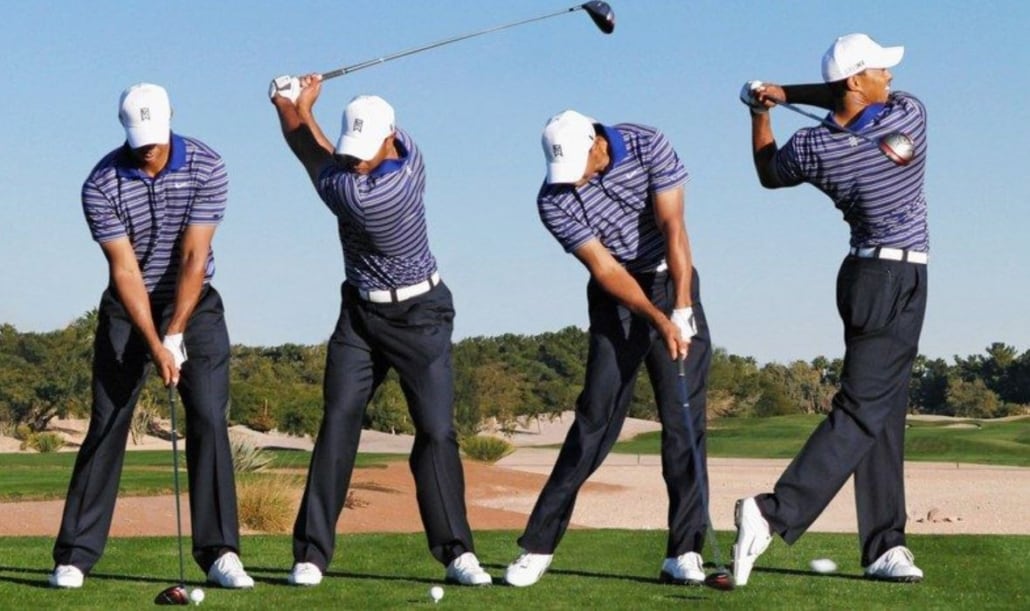
Golfers, especially male golfers, are in a continuous search for the longest drive to prove they are the king of the jungle and have bragging rights while consuming refreshments at the 19th hole.
Innovative technology in shafts, clubheads, and golf balls have shortened golf courses to a significant extent, but the impact of the shaft length remains a topic of discussion. Golf courses are purchasing additional land to extend the courses, making the rough deeper and thicker, and adding more hazards to offset the extra distance that golfers get from the innovative technology.
Driver shaft length is restricted to 48“ by the USGA and R&A golf governing bodies. This applies to all competition including long drive competitions
So, if a longer shaft equals more distance, why doesn’t everyone use a maximum length of 48” driver?
Choosing The Right Shaft Length By Height
The length of your clubs is based on men being on average 5 feet 9 “es tall and women 5 feet 7 “es tall. The lengths in the chart below are the variation from the standard lengths.
Although the length of arms varies between individuals, I will use the average distance from wrist to floor.
Height |
Wrist to floor |
Driver shaft length |
Below 4’ 10” |
Less than 25” |
-2” |
4’ 10” to 5’ 0” |
25” to 27” |
-1.5” |
5’ 0” to 5’ 2” |
27” to 29” |
-1” |
5’ 2” to 5’ 4” |
29” to 34” |
-0.5” |
5’ 4” to 5’ 7” |
32” to 34” |
-0.25” |
5’ 7” to 6’ 1” |
34” to 37” |
Standard length |
6’ 1” to 6’ 2” |
37” to 38” |
+0.25” |
6’ 2” to 6’ 4” |
38” to 40” |
+0.5” |
6’ 4” to 6’ 6” |
40” to 41” |
+1” |
6’ 6” to 6’ 8” |
41” to 42” |
+1.5” |
Over 6’ 8” |
Over 42” |
+ 2” |
The Effect Of Club Length On Swing Speed And Distance
Research shows that a 1” additional shaft length generates approximately 10 yards more in distance. Great news if you are able to keep the ball going straight with the extra speed and length, not so useful if you start ending up in the trees, rough or water!
Clubhead Speed And Ball Carry Distance
According to statistics compile using Trackman the driving efficiency varies between swing speeds. The statistics are compiled for well-struck shots and off-center hits will play a significant role in the results that you accomplish.
At swing speeds of around 90 mph, the driving efficiency calculates to around 2.3 yards or 207 yards of carry.
The average swing speed on the LPGA Tour is 94 miles per hour thus calculating approximately 220 yards of carry.
High swing speed produced by PGA Tour golfers, averaging 113 mph with the driver, generate a driving efficiency of 2.4 yards or roughly 270 yards of carry.
The swing speed of the driver is generally much higher than shorter clubs, but the same principle applies to all clubs. The lower your swing speed, the lower the efficiency of the club, and the shorted the distance.
Optimum driver shaft length
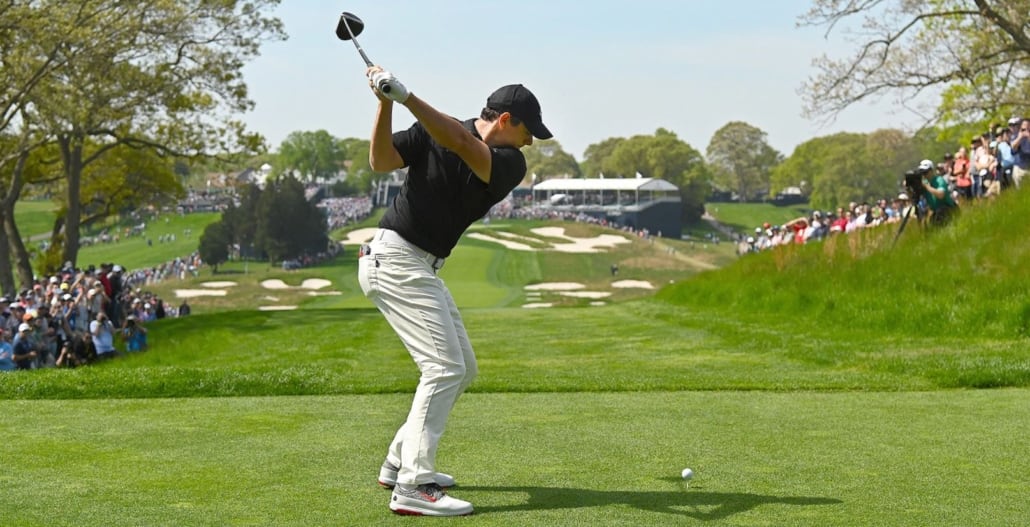
The optimum driver shaft length varies from player to player but in short, it is the one that offers you maximum clubhead speed, control, and distance. One without the other will always make you wonder if your shaft is the one for you.
Shafts on the professional golfing tours are on average 44.5” while the average shaft length fitted to drivers that you buy off the shelf is approximately 45.5”.
A custom fitting is the best way to best way to ensure that your driver shaft is the correct size.
Does Increasing Driver Length Always Work
No, it does not always work. If you do not have control over your swing it is unlikely that you will be able to swing the club faster.
When Will It Add Distance And When Won’t It?
As long as you maintain control over your swing and make contact with the sweet spot you will get more distance from a faster swing.
When you lose control over your club attempting to swing it faster, you are less likely to hit the sweet spot and thus lose distance no matter how fast you swing.
Does Increasing Length Always Add Clubhead Speed?
Increasing length will increase swing speed to a certain extent in most cases, but, again, control is more important. You may be able to generate more clubhead speed but not translate the speed into the extra distance or end up in the rough or the trees.
Benefits Of Longer Driver Shafts
Longer shaft = increased swing speed = higher ball speed = increased distance. That is what we have been led to believe by the golfing fraternity
Testing shows that an inch of extra shaft length adds approximately 10 yards in distance to your drive. Therefore, everything else being equal, a 45.75” could add 20-25 yards extra over a 43” driver.
Benefits Of The Shorter Driver Shaft

If a longer shaft produces higher swing speed, how will anyone benefit from using a shorter shaft?
The answer lies in the amount of control that you can exercise over your swing to produce more consistent and accurate contact with the sweet spot of your driver and other clubs for that matter. For every half-inch that contact is off the sweet spot, you can expect a reduction of 5% in distance.
Shorter shafts offer more control. That is the reason that your wedge shafts are the shortest of all the clubs in your bag. You need control over your scoring clubs.
How Do I Measure My Driver Shaft Length?
Shaft distance is measured from the top of the grip to where the club head meets the ground. Players can be custom fit at a golf shop for the proper length of their club shafts.
How To Know When To Shorten Or Lengthen Your Driver Shaft?
For the longest and straightest drives, you have to make contact with the sweet spot of your clubface.
The best way to determine whether your shaft is too long or too short is to look at the area that you make consistent contact with the golf ball. An effective way to monitor this is to use the trusted method used for decades. Dr. Scholl’s foot spray leaves a powdery layer on the clubface that makes it easy to identify where contact was made.
Shafts that are too long will produce heel contact and therefore the ball will consistently fly to the right. By choking down on the shaft, you will be able to see whether a shorter shaft will be of any benefit.
In contrast to this, a shaft that is too short will produce a contact pattern on the toe of your driver and balls that tend to fly to the left.
How To Add Length To My Driver?
Extending your shafts for more clubhead speed can be done by either adding extenders to your existing shafts or replacing your existing shafts with longer ones.
The effects can be vastly different.
By using extenders to lengthen the shaft you will change the characteristics of the shaft. The flex will be changed, sometimes by an unpredictable amount, thus affecting accuracy and lowering the kick point of the shaft.
Replacing the shaft will allow you to keep the characteristics of the original shaft.
How To Subtract Length From My Driver?
Shortening the shaft of the driver can be achieved by either cutting the required length off the top of the shaft or replacing the shaft.
Similarly, lengthening your shaft could influence the characteristics of the shaft.
Replacing the shaft with the characteristics that suit your swing is the best way to go.
How Does The Tee Height Affect Driving Distance?
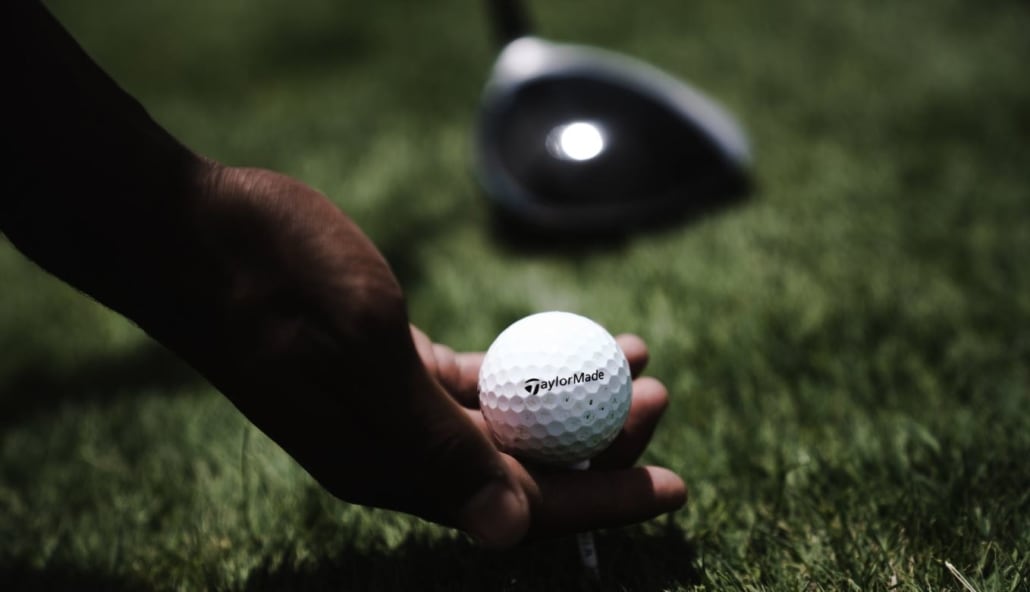
Keeping the golf ball in the air for the longest drive requires you to hit the golf ball on the up and create a higher trajectory.
To achieve this, you require a tee of the length that suits your swing path the best and is high enough to allow your driver to make square contact.
Although there is no definitive answer, there are some good guidelines that will make it easier for you to select the best height for your swing.
Most golfer pundits agree that the correct height to tee your ball is when the bottom of the ball is level with the top of the clubface of your driver. This will improve the chances of making square contact during the upswing and deliver the ultimate ball trajectory.
Teeing the ball up too low will result in a flatter ball trajectory and the ball falling back to the ground sooner as a result of the amount of topspin generated at contact.
A ball that is teed up too high increases the risk of poor contact on the upper side of the golf club and lower half of the ball. This will create severe backspin, a high ball trajectory, and a loss in distance. Teeing up the ball too high increases the risk of contact on top of the driver’s crown that leaves a reminder that you will see every time you pull the driver from your bag.
Does Shaft Length Affect The Performance Of Other Clubs?
Shaft length will influence any club in your bag, but the effect is exaggerated in the driver as the shaft is longer than other clubs.
Woods
There are no industry standard lengths set for fairway woods but in general, the higher the golf club number, the shorter the club shaft length.
The shaft of a 3 wood is typically between 42” and 43”, a 5 wood between 41” and 42”, and a 7 wood between 40” and 41”. This may vary between manufacturers.
Since the average steel shaft weighs 100 grams or more, and graphite shafts range between 50-75 grams, you will gain more distance with a graphite shaft without compromising feel or consistency.
Hybrids
Hybrid graphite or lightweight steel shafts are typically 0.75” longer than the equivalent iron, some manufacturers offer shafts that are up to 1.25” longer than the equivalent iron.
Irons
The one iron, however scarce it may be, is a little over 40” in length. The shaft length generally reduces by ½ “ as the number of the iron increase up to the 9-iron that measures a little over thirty-six “es. Typically, steel shafts are one inch shorter than graphite shafts.
Do Shorter Shafts Have More Accuracy?
Shorter shafts offer more control during your swing and thus it is more likely that you will hit the sweet spot more frequently. Mishits by as little as ½ “off the sweet spot can result in a loss of 5% in distance and accuracy.
You are more likely to find the sweet spot of the driver when the shaft is shorter.
It is crucial that you find the right combination of speed and control by assessing your swing with various shaft lengths on a launch monitor.
What other shaft factors affect golf shots?
Factors that play a significant role in generating speed and accuracy are
- Weight – light shafts will allow you to generate the most speed but may impact your accuracy. Men prefer heavier weighted shafts especially on their irons to add to control
- Torque – the twisting movement of the shaft during the golf swing. The higher the rating will create a softer feel and the higher the ball trajectory.
- Kick-point or flex-point – the measurable effect where the shaft bends will affect shot trajectory.
Regular, Ladies Vs Standard Flex
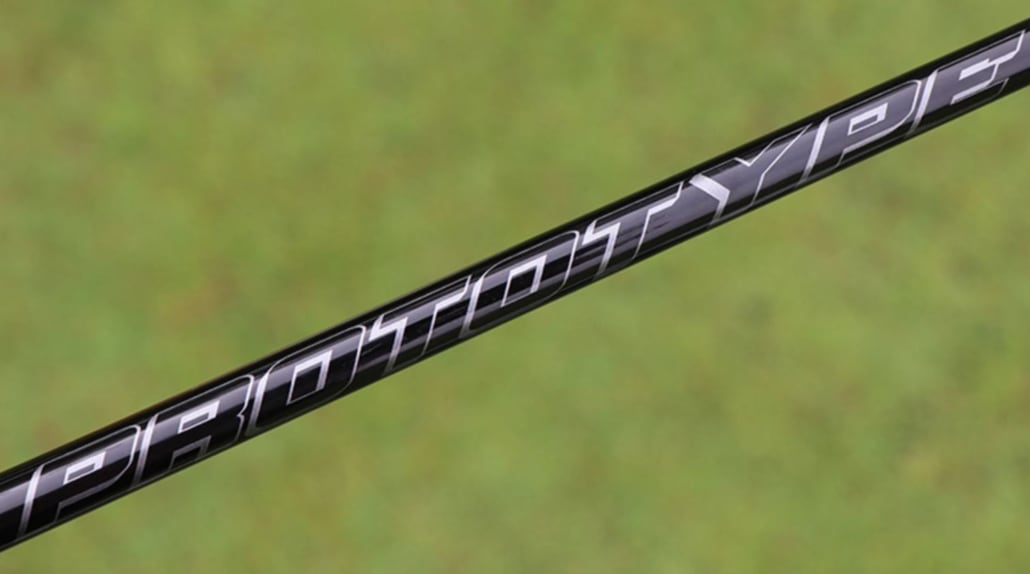
Regular shafts (R) are used by average golfers that swing between 90 and 100 mph, stiff shaft (S) by golfers that swing between 100 and 110 mph, and extra-stiff (X) shafts by golfers that swing faster than 110 mph, typically tour professionals.
With aging, you tend to lose muscle mass resulting in a loss of swing speed. Senior men generally generate swing speed between 75 and 90 mph ad the senior flex (A) shaft is more appropriate.
Women with a swing speed below 60 mph and men with a swing speed below 80 mph want the least flex possible and will benefit most from Ladies flex (L) shafts.
Should I use one length irons?
Since the changes that Bryson DeChambeau made to his physique and stepped up his game, a lot of people have started focusing on the use of one-length irons.
With the intricacies in the golf swing making it difficult to master, one length clubs can build consistency throughout all the clubs in your bag. This can make it much easier for beginners to build a solid base to build their swings on
Pros
- Same setup for every club
- Same swing and swing plane for every club
- Ball position remains constant
- No resetting require to adjust to a club’s length
- No swing is more or less upright
Cons
- Lower-numbered irons in a one-length set tend to fly a lower than the equivalent in progressive length irons
- Loss of control in wedges and short irons
- traditional irons. Not getting enough height on shots is already a problem for most recreational golfers
- Gapping between clubs in a one-length iron set tends to be smaller between consecutive irons
Should You Use One-Length Irons?
Although one length irons provide consistency in your swing irrespective of the iron you have in your hand, you are likely to lose some control over your short irons.
Should I choke up on my driver?
Choking up, or down if you prefer, is when you grip down approximately 1 “ or more from the butt of the shaft for more control and improved accuracy.
Choking up on your driver can assist you especially on days that you feel that your driver is not cooperating with you, or you are playing a tight course that requires some increased accuracy.
This may cost you some clubhead speed but the increase in accuracy will produce better drives and easier approach shots.
How Far Does An Average Golfer Hit A Driver?
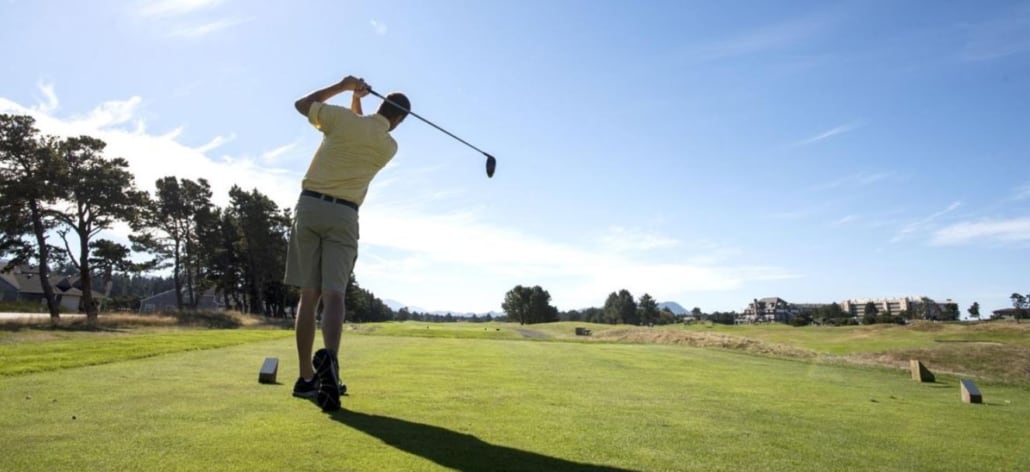
How far average amateur golfers drive the golf ball is not an exact science. Several factors such as the carry, roll, temperature, and altitude to name a few influences the total distance.
Other factors that will play a role are the clubs you are using, the balls you are using, the conditions under which you play (hard fairway or soft fairway? windy or calm? humid or dry? etc.), your gender and age, your physical fitness, coordination and athleticism, your swing speed, how solidly you are connecting with the ball, and so on.
To answer the question of how far an average golfer hits a driver we must define what we mean by “average”. It is generally accepted that the average of all golfers will hit a driver approximately 220 yards.
The average PGA Tour player hits their driver in the 290-yard range. This is only a dream for the average golfer though.
For this article, we will only look at carry distance and rounded to the nearest yard.
Average golfer driving distances by age:
- 10-19 – 234 yards
- 20-29 – 240 yards
- 30-39 – 239 yards
- 40-49 – 226 yards
- 50-59 – 215 yards
- 60-69 – 205 yards
- 70 and up – 190 yards
Average golfer driving distances by handicap
- Below 5 – 251 yards
- 5 – 10 – 231 yards
- 10 – 19 – 216 yards
- 19 – 28 – 196 yards
- Above 28 – 177 yards
Rickie Fowler plays 43.5” driver and is averaging 304 yard
Rory McIlroy plays a 45.625” shaft with an average driving distance of 322.7 yards
Tiger Woods plays a 43.5in with an average driving distance of 290.3 yards
Justin Thomas plays a 43.5” shaft with an average driving distance of 300.8 yards
How To Add Length To Driver Distance
There are many ways to improve your distance related to your equipment but changing your swing and physical attributes through stretching and exercising will add yards as well.
Manufacturers continue to invest vast amounts into research and development and most release new versions of its drivers annually. Matching your swing to the driver characteristics will ensure that you get optimal distance and accuracy.
Factors to consider when looking for a driver are:
- Titanium allows manufacturers to offer the largest possible sweet spot and increase the trampoline effect off the face of the driver. These factors increase the forgiveness of the club and provide extra distance when struck in the sweet spot.
- Loft and launch angle are dependent on your swing speed and you should evaluate this when selecting your driver.
- Adjustability will allow you to change the loft and lie angle and can assist you like your swing speed decrease.
- Spin plays a significant role in your driver distance. Generating too much spin will create a high ball flight and possible loss of distance while low spin will cause the ball to fall to the ground too soon and a loss in distance.
Watch this video on YouTube to provide a better understanding of benefits of a shorter shaft length..
Conclusion
Selecting the best driver for your swing can be an arduous task at the best of times. Selecting the best shaft will go a long way in optimizing your swing characteristics, provide maximum distance, and put a smile on your face.
There are many technical aspects to consider during your selection process.
Longer shafts may generate more speed and distance but losing accuracy will push the ball further into the hazard or into more trouble.
Keep your ball on the fairway and the smile on your face!!!



